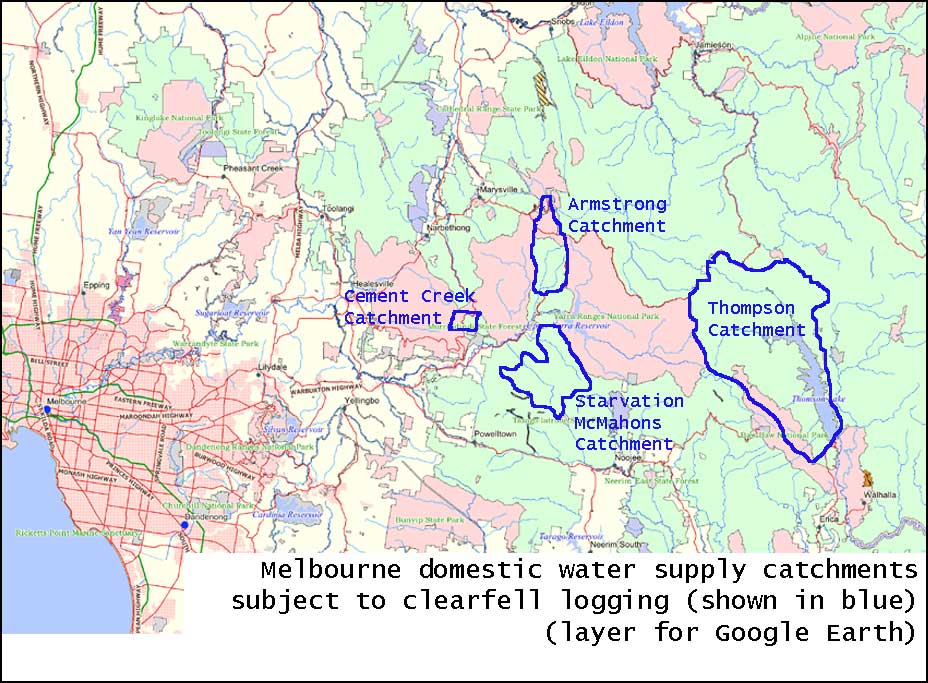Logging rainforest within the Melbourne's domestic water supply catchments.
Much of the rainforest threatened by clearfell logging in the Central Highlands is also within the domestic water supply catchments for Melbourne.
Clearfell logging is permitted within four of Melbourne's domestic water supply catchments, as shown in the image below. These catchments are:
- Thomson dam catchment.
(See current dam water levels on Melbourne Water website) - Armstrong Catchment
- Starvation/ and McMahons Catchment
- Cement Creek Catchment.
However logging is reducing the water supply for 3.6 million people who live in Melbourne.
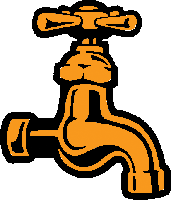 read the brass tap story
read the brass tap story ![]() telling how clearfell logging in the forested Melbourne water supply catchments is reducing water supply. Click on any of the taps in Google Earth to open a pop up box.
telling how clearfell logging in the forested Melbourne water supply catchments is reducing water supply. Click on any of the taps in Google Earth to open a pop up box.
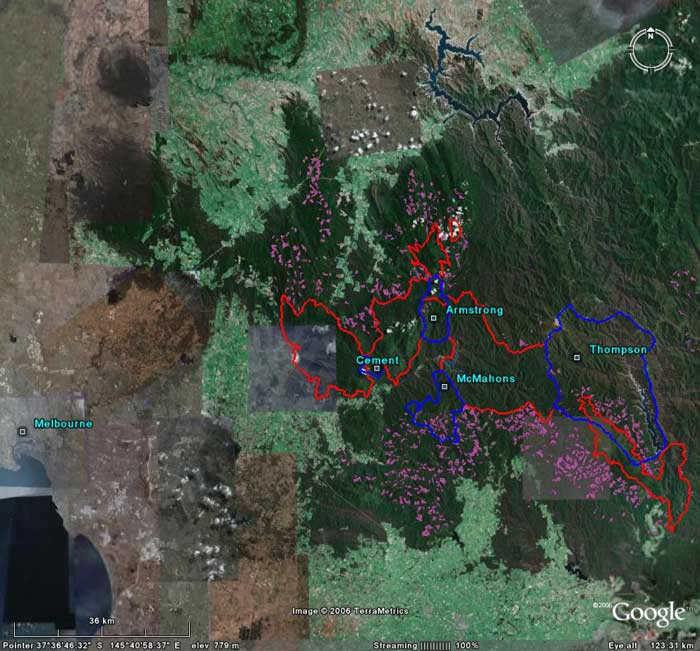
Download hi res pdf image of this view.
The blue lines mark boundaries of the domestic water supply catchments for Melbourne where clearfell logging is permitted. Red lines mark the boundary of National Parks. Pink shows areas that were clearfell logged between late 1980's to June 2004.
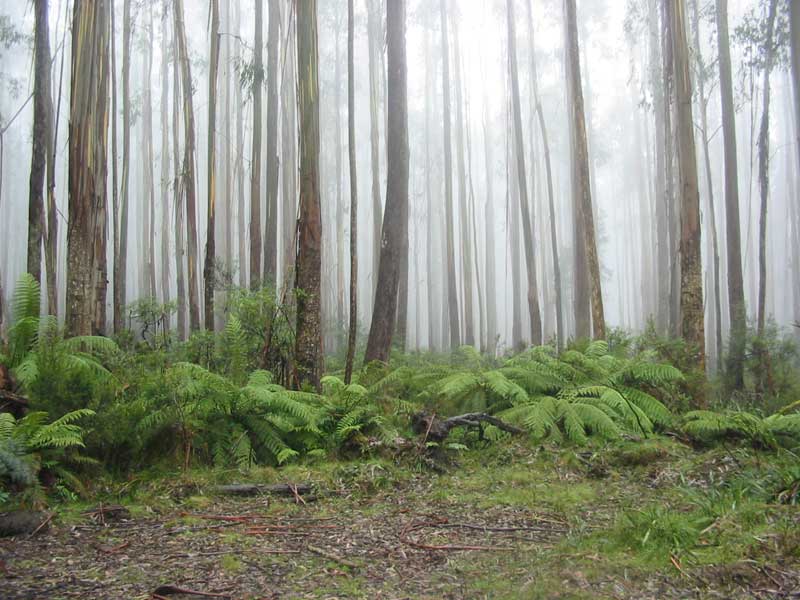
The p icture above is typical 1939 ash regrowth forest that is targeted for clearfell logging within the Thomson dam catchment.
Water catchment overlays for Google Earth
Download overlay of Melbourne's domestic water supply catchments that are subject to clearfell logging: click here![]() or on the map below.
or on the map below.
Logging and water yield
The government's own reports estimate that water yield would increase by more than 20,000 Mega litres in thirty years time if logging was banned in the Thomson water supply catchments. This increase is more water than what is used annually by a city the size of Ballarat or Bendigo!
Scientific research within the Melbourne water supply catchments has demonstrated that the young regrowth forests that grow after clearfell logging in wet high rainfall forests consume much more water than an old forest. Hence the practice of clearfell logging can significantly reduce water runoff in catchments for hundreds of years by converting older forests into young regrowth trees.
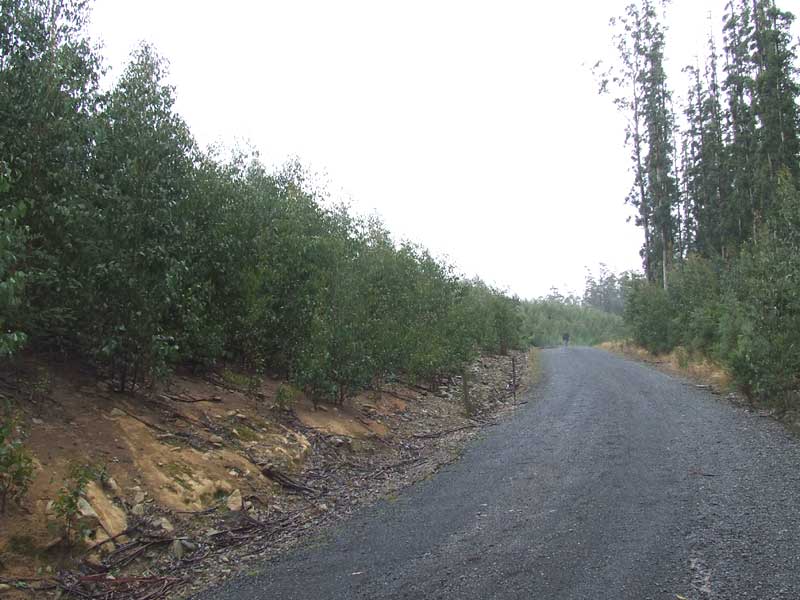
Picture shows the plantation-type regrowth trees four years after logging. These consume lots of water.
See video and placemark of evenage regrowth forest after clearfell logging in the Thomson dam catchment. ( 9 sec 0.6MB)
In the long term, the economic value of the water lost through logging is much greater than the value of the woodchips and timber.
In the Otways this water yield issue resulted in logging being banned within all of the Geelong domestic water supply catchments in 2002. For details on the logging/ water yield issue, see an old presentation used during the Otways campaign by the Otway Ranges Environment Network. See OREN water website archive.
The Victorian Government and native forest logging industry argue that only a small fraction of the forest is clearfell logged each year.
However it is the cumulative effect of clearfell logging in the catchment areas that is the real issue.
Most of the logging to date has targeted the high rainfall ash forests. For the Thomson catchment this has resulted in logging targeting the high rainfall upper slopes of Mt Baw Baw where ash forests naturally grow.
Ash forests cover more than half of all the combined catchments area and are the major contributor to the water supply; 80% of the water that goes to Melbourne falls in the ash forest part of the catchments.
Hence logging that targets ash forests is having the greatest impact on water supply.
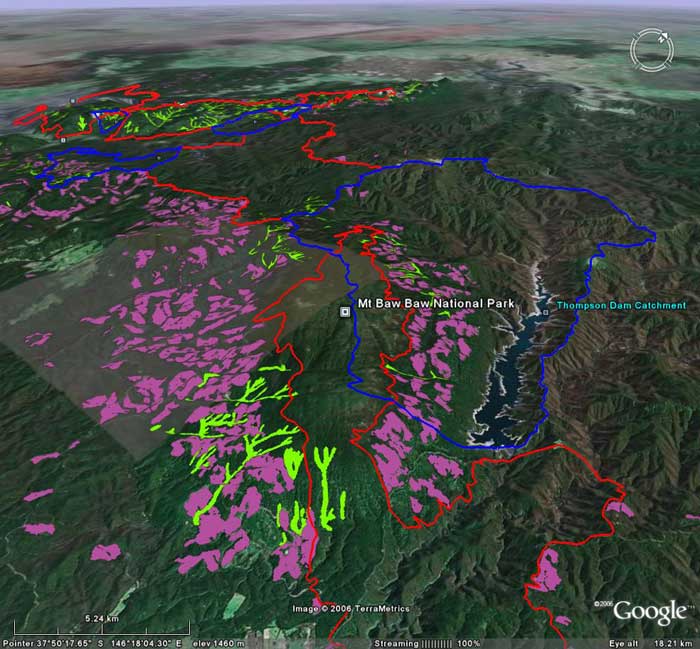
Download hi res pdf image of this view.
This is a oblique view of clearfell logging history in the Thomson dam catchment. The Blue line is the Thomson dam catchment boundary. The Red line shows the boundary of the Baw Baw National Park. The Pink shows the areas that were clearfell logged in the Central Highlands (between the late 1980's and June 2004). Bright green represents cool temperate rainforest EVC (Ecological Vegetation Class).
Additionally, the practice of clearfell logging is converting the wet ash forests, that are naturally more fire resistant, into drier environments that are more fire prone. A big bushfire in the Melbourne water catchments is the greatest threat to water supply. See more details.
Who clearfell logs the catchments?
The Victorian Government permits logging in the Melbourne water catchment areas through VicForests. These areas are publicly owned; the Victorian Government, through Vicforests, manages them for the people of Victoria.
Most of the woodchipped forest in the catchment areas of Mt Baw Baw is sold to the nearby PaperlinX pulp & paper mill at Maryvale.and made into paper products like Reflex photo copy paper.
The PaperlinX pulp & paper mill is about 40 kilometres away from the Thomson catchment. See and measure this for yourself by downloading the location of the PaperlinX pulp & paper mill![]() and setting the ruler/measure function in Google Earth to kilometres (Tools->Ruler>).
and setting the ruler/measure function in Google Earth to kilometres (Tools->Ruler>).
What needs to be done?
In 2002 the Victorian government was elected with forest policies, it has acted on these - passing laws to ban all logging within the Geelong domestic water supply catchment in the Otways. This occurred because water was a big public issue for the people of Geelong, and the Government listened. This should happen again, this time for all of the Melbourne catchments.
Find out the latest news about what the owners of Reflex photocopy paper and the Victorian Government have to say about clearfell logging in Melbourne's domestic water supply catchments
What can you do?
The more people who are made aware about what is the more likely governments will listen and ban clearfell logging.
Help educate people by emailing ![]() this web page to your friends, family, work mates etc.
this web page to your friends, family, work mates etc.
or send an email to the Victorian government leaders ![]() .
.
